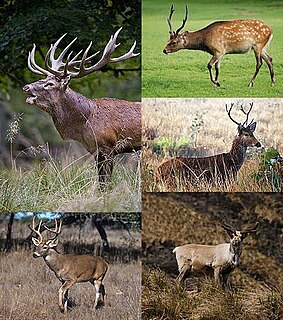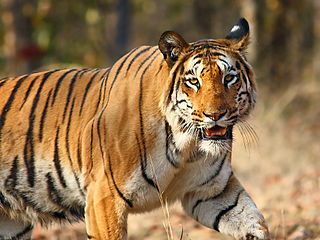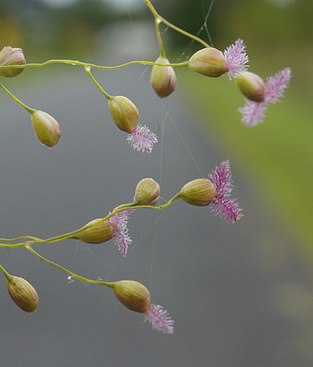
Equidae is the taxonomic family of horses and related animals, including the extant horses, donkeys, and zebras, and many other species known only from fossils. All extant species are in the genus Equus. Equidae belongs to the order Perissodactyla, which includes the extant tapirs and rhinoceros, and several extinct families.

Eagle is the common name for many large birds of prey of the family Accipitridae. Eagles belong to several groups of genera, not all of which are closely related. Most of the 60 species of eagle are from Eurasia and Africa. Outside this area, just 14 species can be found—2 in North America, 9 in Central and South America, and 3 in Australia.

Deer are the hoofed ruminant mammals forming the family Cervidae. The two main groups of deer are the Cervinae, including the muntjac, the elk (wapiti), the fallow deer, and the chital; and the Capreolinae, including the reindeer (caribou), the roe deer, and the moose. Female reindeer, and male deer of all species except the Chinese water deer, grow and shed new antlers each year. In this they differ from permanently horned antelope, which are part of a different family (Bovidae) within the same order of even-toed ungulates (Artiodactyla).
A genus is a taxonomic rank used in the biological classification of living and fossil organisms, as well as viruses, in biology. In the hierarchy of biological classification, genus comes above species and below family. In binomial nomenclature, the genus name forms the first part of the binomial species name for each species within the genus.

Binomial nomenclature, also called binominal nomenclature or binary nomenclature, is a formal system of naming species of living things by giving each a name composed of two parts, both of which use Latin grammatical forms, although they can be based on words from other languages. Such a name is called a binomial name, a binomen, binominal name or a scientific name; more informally it is also called a Latin name.

Otters are carnivorous mammals in the subfamily Lutrinae. The 13 extant otter species are all semiaquatic, aquatic or marine, with diets based on fish and invertebrates. Lutrinae is a branch of the Mustelidae family, which also includes weasels, badgers, honey badgers, martens, minks, polecats, and wolverines.

Anseriformes is an order of birds that comprise about 180 living species in three families: Anhimidae, Anseranatidae, and Anatidae, the largest family, which includes over 170 species of waterfowl, among them the ducks, geese, and swans. Most modern species in the order are highly adapted for an aquatic existence at the water surface. With the exception of screamers, all have phalli, a trait that has been lost in the Neoaves. Due to their aquatic nature, most species are web-footed.

In biology, a monotypic taxon is a taxonomic group (taxon) that contains only one immediately subordinate taxon.

In zoological nomenclature, a type species is the species name with which the name of a genus or subgenus is considered to be permanently taxonomically associated, i.e., the species that contains the biological type specimen(s). A similar concept is used for suprageneric groups called a type genus.

A botanical name is a formal scientific name conforming to the International Code of Nomenclature for algae, fungi, and plants (ICN) and, if it concerns a plant cultigen, the additional cultivar or Group epithets must conform to the International Code of Nomenclature for Cultivated Plants (ICNCP). The code of nomenclature covers "all organisms traditionally treated as algae, fungi, or plants, whether fossil or non-fossil, including blue-green algae (Cyanobacteria), chytrids, oomycetes, slime moulds and photosynthetic protists with their taxonomically related non-photosynthetic groups ."

Tube-dwelling anemones or ceriantharians look very similar to sea anemones but belong to an entirely different subclass of anthozoans. They are solitary, living buried in soft sediments. Tube anemones live inside and can withdraw into tubes, which are composed of a fibrous material made from secreted mucus and threads of nematocyst-like organelles known as ptychocysts. Ceriantharians were formerly classified in the taxon Ceriantipatharia along with the black corals but have since been moved to their own subclass, Ceriantharia.

India has some of the world's most biodiverse regions. The political boundaries of India encompass a wide range of ecozones—desert, high mountains, highlands, tropical and temperate forests, swamplands, plains, grasslands, areas surrounding rivers, as well as island archipelago. It hosts 4 biodiversity hotspots:the Himalayas, the Western Ghats, the Indo-Burma region and the Sundaland. These hotspots have numerous endemic species.

Acacia, commonly known as the wattles or acacias, is a large genus of shrubs and trees in the subfamily Mimosoideae of the pea family Fabaceae. Initially, it comprised a group of plant species native to Africa and Australia, with the first species A. nilotica described by Linnaeus.

In biological classification, taxonomic rank is the relative level of a group of organisms in a taxonomic hierarchy. Examples of taxonomic ranks are species, genus, family, order, class, phylum, kingdom, domain, etc.

Hubbardiidae is a family of arachnids, superficially resembling spiders. It is the larger of the two extant families of the order, Schizomida, and is divided into two subfamilies. The family is based on the description published by Orator F. Cook in 1899, and was previously named as Schizomidae. The American Arachnological Society assigns the common name hubbardiid shorttailed whipscorpion to members of this family
Hubbardia is a genus in the grass family that is endemic to India. It is the only genus in the tribe Hubbardieae of the subfamily Micrairoideae.

Holotheria are a diverse group of mammals that are descendants of the last common ancestor of Kuehneotherium and Theria.

Isachneae is a tribe of tropical and subtropical grasses in subfamily Micrairoideae, with around 120 species in six genera.

Hubbardia is a genus of short-tailed whipscorpions in the family Hubbardiidae. There are about nine described species in Hubbardia.

Hubbardia pentapeltis is a species of short-tailed whipscorpion in the family Hubbardiidae.















